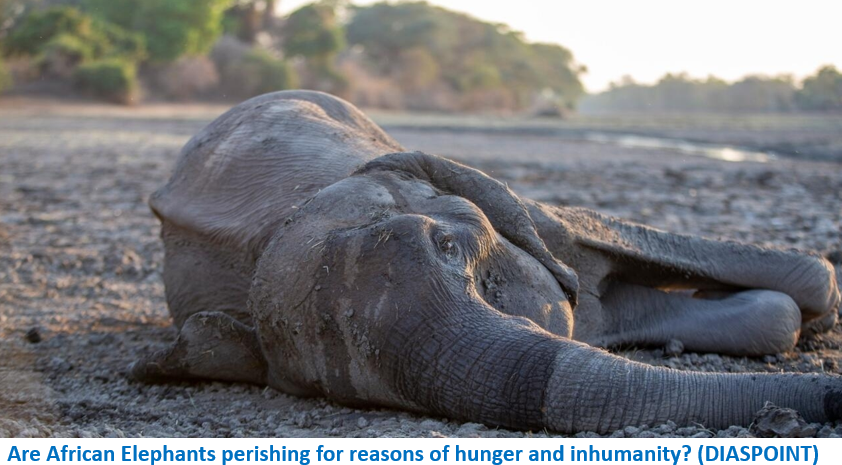At Least 160 Elephants Perish in Zimbabwe Due to Drought, Conservationists Fear More Deaths Ahead
Post By Diaspoint | January 21, 2024

At the heart of Zimbabwe lies the majestic Hwange National Park, the country’s largest natural reserve. But today, it stands as a testament to the devastating impact of climate change. Between August and December of last year, this land of diverse flora and fauna became a graveyard for at least 160 elephants, victims of a severe drought linked to climate change. Conservationists fear that the situation could worsen with persistent dry weather predicted by the National Oceanic and Atmospheric Administration (NOAA).
The Victims of Climate Change
The drought has taken a significant toll on the young, old, and sick elephants. Starvation has been the primary cause of their demise, with many dying in close proximity to drying water sources. The strong El Niño weather phenomenon, as predicted by NOAA, has only exacerbated the situation. The dry spell has forced the wildlife to traverse long distances in search of food and water, leading to exhaustion and eventual death, particularly among water-dependent mammals like elephants.
Conservation Efforts Amid Crisis
As the situation grows grimmer, conservation efforts are underway. More boreholes are being drilled, and solar-powered systems are being installed to extend water access in the park. However, these interventions are not without their own set of challenges. The economic situation in Zimbabwe has led to a rise in bushmeat poaching, further compounding the crisis faced by the wildlife. In January alone, six elephant deaths outside the park were attributed to poaching.
The Role of Zimbabwe Parks & Wildlife Management Authority (Zimparks)
Read More from original source
